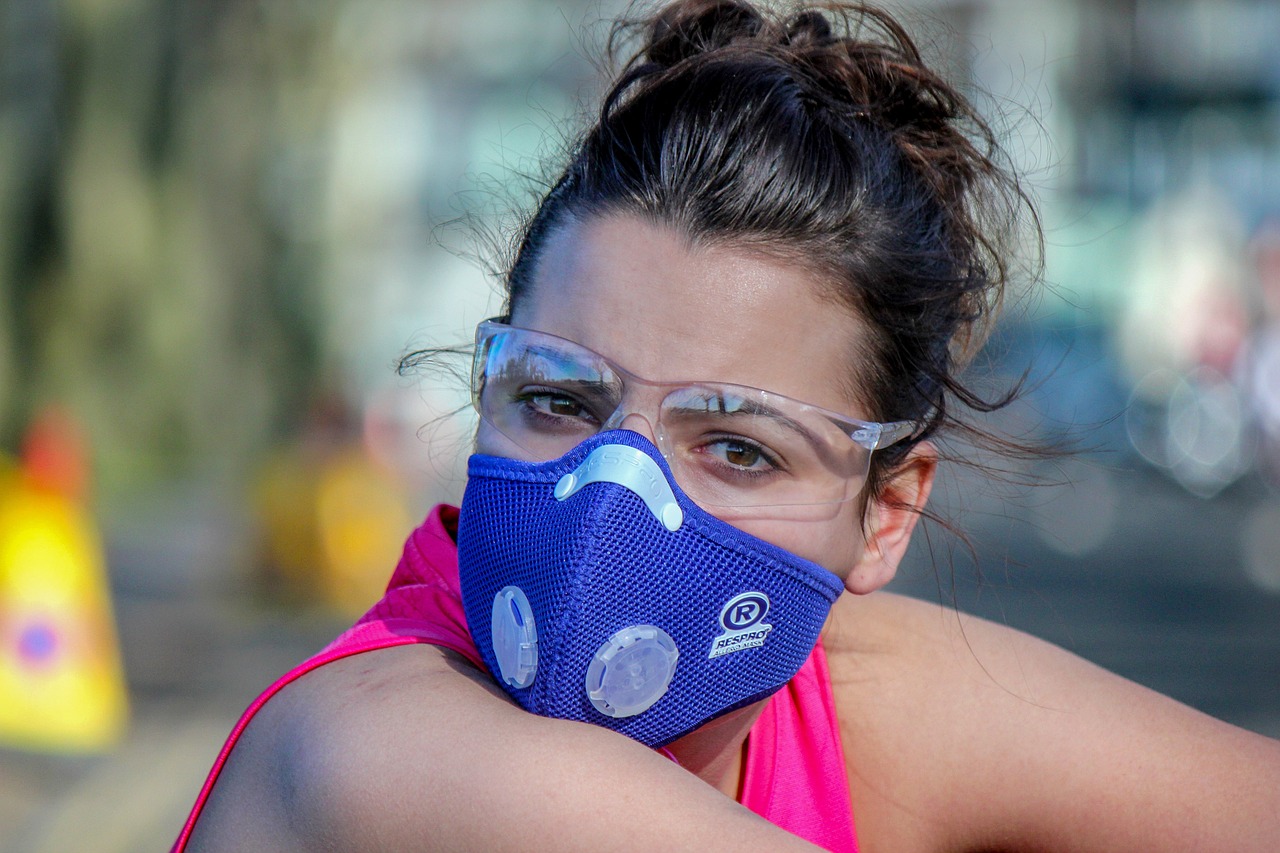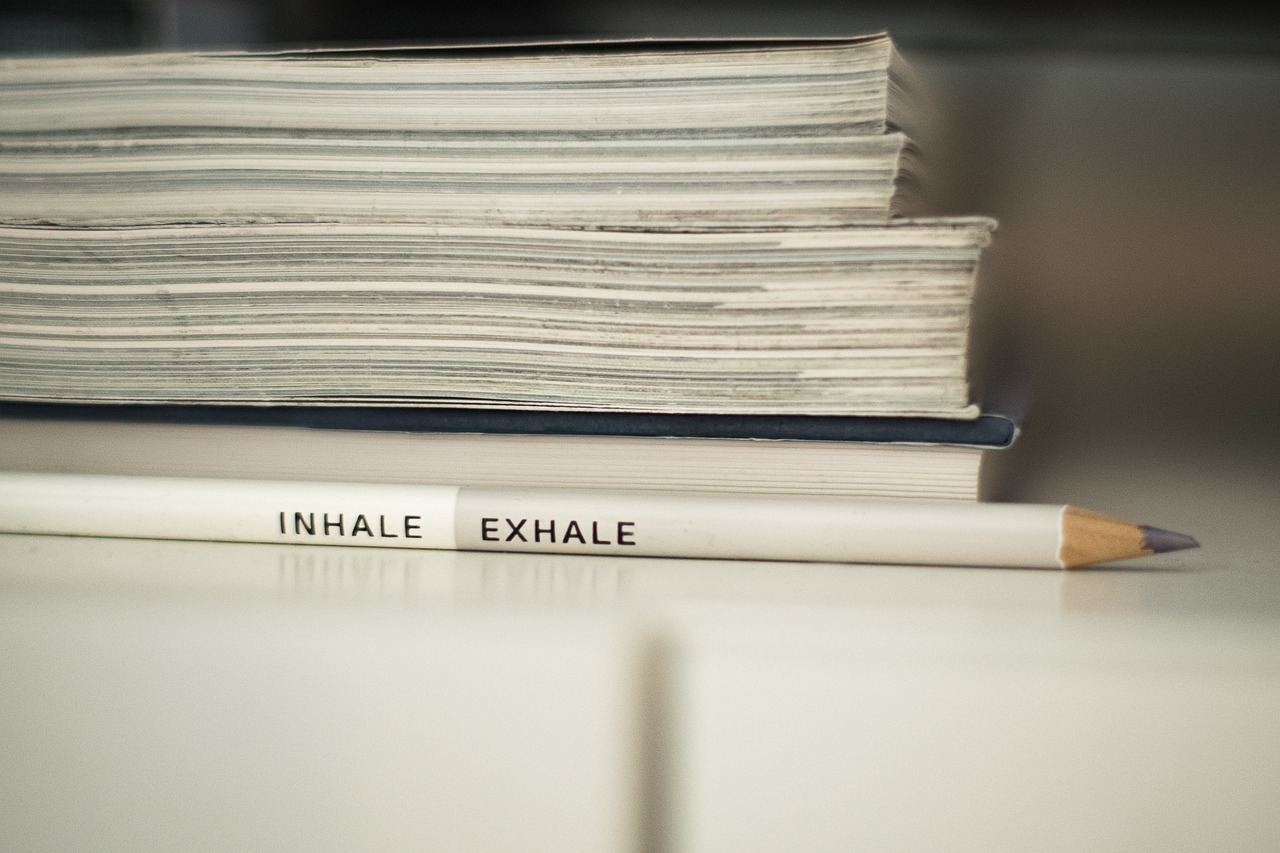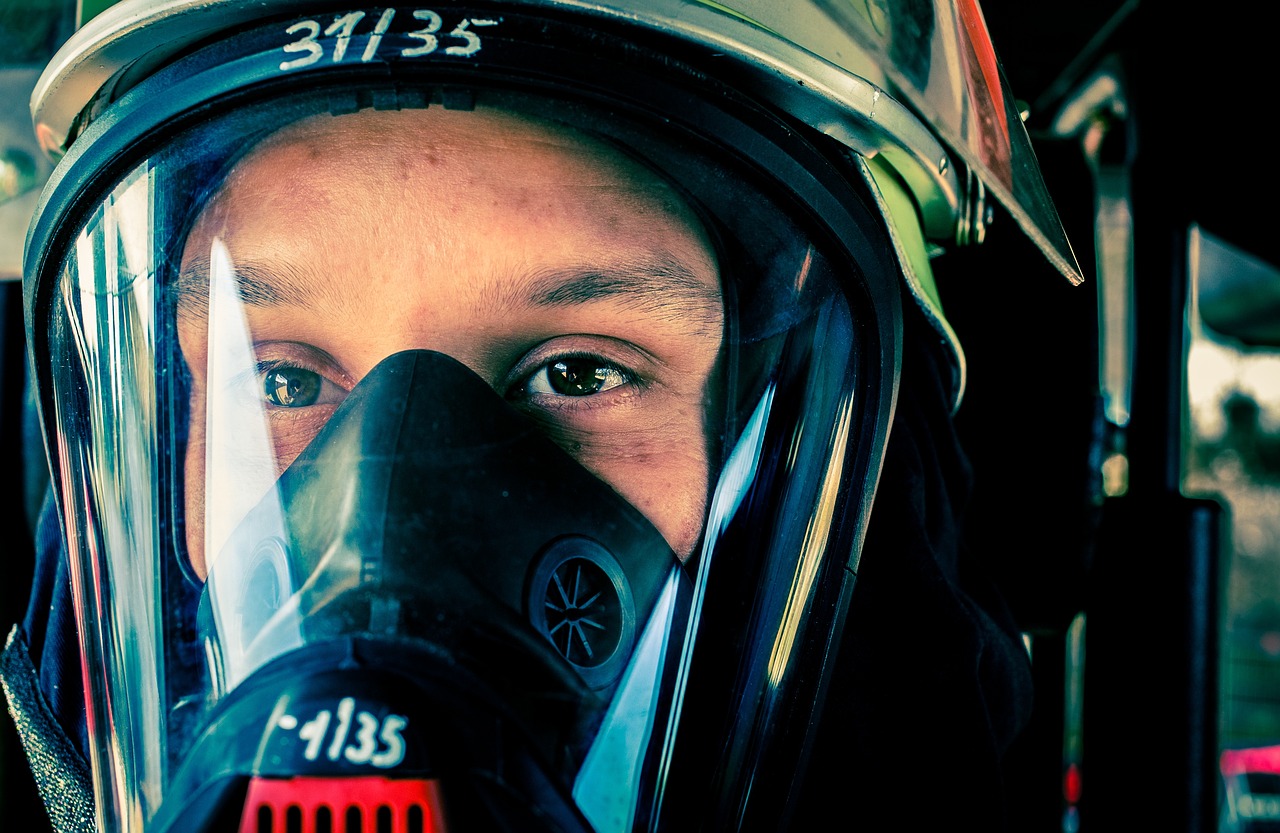The Role of Breathing Techniques in Self-Defense Training
When it comes to self-defense training, many people focus on physical techniques, strength, and agility. However, one crucial aspect that is often overlooked is the power of breathing techniques. Yes, you heard that right! Proper breathing can be a game-changer in high-pressure situations. Imagine being in a confrontation where every second counts; your heart races, your palms sweat, and your mind starts to spiral. Now, picture yourself taking a deep breath, regaining your composure, and responding effectively. This article explores how mastering your breath can not only enhance your performance in self-defense scenarios but also improve your overall mental clarity and focus.
Breathing is more than just an involuntary action; it's a conscious tool that can be harnessed to optimize your self-defense skills. Think of it as your secret weapon. Just like a martial artist perfects their punches and kicks, integrating breathing techniques into your training can significantly elevate your game. Whether you're practicing in a dojo or facing a real-life threat, knowing how to control your breath can help you maintain a calm and collected mindset. It's about transforming panic into power!
As we dive deeper into the role of breathing techniques in self-defense, we'll discuss the physiological effects of breath control during high-stress situations and explore various methods that can be employed. From diaphragmatic breathing to box breathing, each technique serves a unique purpose and can be tailored to fit your individual needs. So, are you ready to unlock the full potential of your breath and enhance your self-defense training? Let’s get started!
Understanding the importance of breath control in self-defense is fundamental. When faced with a threatening situation, maintaining composure is key. Your body reacts to stress by triggering the fight-or-flight response, which can lead to rapid breathing, increased heart rate, and a surge of adrenaline. This physiological response can cloud your judgment and hinder your performance. However, by mastering breath control, you can counteract these effects, allowing you to think clearly and act decisively.
Controlled breathing helps to regulate your heart rate and stabilize your emotions. Imagine being in a sparring match; if you’re gasping for air, your focus will wane, and your movements will become sluggish. Conversely, if you practice breath control, you’ll find yourself more centered and aware of your surroundings. This awareness can be the difference between successfully defending yourself and being caught off guard.
Now, let's delve into the science behind breathing techniques and their effectiveness in self-defense training. Research has shown that specific breathing methods can significantly influence our stress response and physical performance. When you breathe deeply and slowly, your body receives more oxygen, which in turn enhances your muscle function and endurance. It’s like fueling a high-performance engine; the better the fuel, the better the performance!
Breathing techniques can dramatically reduce stress levels. Engaging in specific breathing exercises can help practitioners manage anxiety and fear during self-defense scenarios. For instance, when you find yourself overwhelmed, taking a moment to focus on your breath can create a sense of calm. Consider these benefits:
- Reduction in anxiety levels
- Improved focus and concentration
- Enhanced emotional regulation
One effective method is diaphragmatic breathing, also known as abdominal breathing. This technique promotes relaxation by allowing the diaphragm to fully engage, which enhances oxygen flow throughout the body. When you practice this method, you’ll find that you can maintain energy and composure during intense training or confrontations. It’s like having a built-in buffer against stress!
Another popular technique among martial artists is the box breathing method. This structured approach involves inhaling, holding, exhaling, and pausing for equal counts, creating a rhythmic pattern that helps to center the mind. This technique is particularly useful for enhancing concentration and mental clarity, allowing practitioners to stay focused on their movements rather than their fears.
Proper breathing not only calms the mind but also enhances physical performance. When you breathe correctly, you increase your endurance and strength during training sessions. It's like tuning an instrument; the better the tuning, the better the music! By optimizing your breathing techniques, you can maximize your capabilities in practice and real-life situations. This is especially important during sparring or self-defense scenarios where every move counts.
So, how can you effectively integrate these breathing techniques into your training regimen? It’s simpler than you might think! Start by incorporating breathing exercises into your warm-up routines. This will prepare both your body and mind for the challenges ahead. Here are some practical tips:
Before every training session, dedicate a few minutes to warm-up breathing exercises. These can include:
- Deep diaphragmatic breaths
- Box breathing for focus
- Gentle stretches with breath synchronization
Maintaining breath control during sparring is crucial for optimal performance. Focus on your breathing patterns while engaging in combat scenarios. Make it a habit to inhale deeply before executing a move and exhale during the exertion. This rhythmic breathing not only enhances your physical capabilities but also keeps your mind sharp and focused.
Q: How can I practice breathing techniques at home?
A: You can practice diaphragmatic breathing and box breathing during quiet moments at home. Set aside a few minutes each day to focus solely on your breath.
Q: Can breathing techniques really improve my self-defense skills?
A: Absolutely! Improved breath control enhances focus, reduces stress, and optimizes physical performance, all of which are essential in self-defense situations.
Q: How long does it take to see improvement in my breathing techniques?
A: With consistent practice, you can begin to notice improvements in just a few weeks. The key is regular practice and mindfulness.

Understanding Breath Control
When it comes to self-defense, breath control is not just a fancy term tossed around in martial arts classes; it's a fundamental skill that can make all the difference in high-pressure situations. Imagine being in a tense scenario where your heart is racing, and your mind is swirling with anxiety. In such moments, how you breathe can either amplify your stress or help you regain composure. Breath control allows practitioners to maintain a sense of calm and focus, which is crucial for making quick, effective decisions.
Physiologically, breath control impacts our body in several ways. When we breathe deeply and steadily, we send signals to our brain that it's time to relax. This can lead to a decrease in the production of stress hormones like cortisol, allowing us to think clearly and react appropriately. Conversely, shallow and rapid breathing can lead to hyperventilation, increasing feelings of panic and confusion. Understanding this connection is vital for anyone looking to enhance their self-defense skills.
Incorporating breath control into training can be likened to tuning a musical instrument. Just as a well-tuned guitar produces beautiful music, a well-regulated breath can lead to improved performance in self-defense. Here are some key aspects of how breath control plays a role:
- Regulation of Heart Rate: Controlled breathing can slow down your heart rate, preventing the fight-or-flight response from taking over.
- Enhanced Focus: Taking deep, measured breaths helps clear your mind, allowing you to concentrate on your surroundings and potential threats.
- Increased Stamina: Proper breathing techniques can enhance oxygen flow to your muscles, improving endurance during physical exertion.
As you delve deeper into self-defense training, you'll find that breath control is not just a technique but a lifelong skill that can benefit you in various aspects of life. Whether you're facing a confrontation or simply navigating daily stressors, mastering your breath can lead to a more empowered and resilient self. So, the next time you step onto the mat, remember that your breath is your ally. Harness it, and you'll be better equipped to handle whatever comes your way.

The Science Behind Breathing Techniques
When it comes to self-defense training, many practitioners focus on physical techniques and mental preparedness. However, the science of breathing plays a crucial role that often gets overlooked. At its core, breathing is not just a biological function; it's a powerful tool that can influence our stress response, mental clarity, and overall performance. Understanding how breathing techniques work can transform the way you approach self-defense.
Firstly, let's dive into the physiological effects of controlled breathing. When we find ourselves in a high-stress situation, our body goes into a fight-or-flight response, releasing stress hormones like cortisol and adrenaline. This can lead to rapid heart rates and shallow breathing, which may cloud judgment and impair physical performance. However, by practicing specific breathing techniques, we can activate the parasympathetic nervous system, which promotes relaxation and counteracts the stress response.
Research indicates that deep, controlled breathing can significantly lower levels of anxiety. For instance, a study published in the Journal of Clinical Psychology found that participants who engaged in structured breathing exercises reported a notable decrease in anxiety levels compared to those who did not. This highlights the connection between breath control and mental well-being, which is vital during confrontations where calmness can make all the difference.
Imagine yourself facing an aggressive opponent. Your heart races, your palms sweat, and panic begins to set in. Now, picture taking a moment to focus on your breath. This simple act can shift your mental state from chaos to composure. Breathing techniques serve as a bridge between the mind and body, allowing practitioners to manage their anxiety and maintain focus. Techniques such as diaphragmatic breathing and the box breathing method are particularly effective in these scenarios, as they help to regulate the body's stress response.
Diaphragmatic breathing, often referred to as abdominal breathing, involves engaging the diaphragm fully while inhaling. This technique not only promotes relaxation but also enhances oxygen flow to the body, which is essential for optimal physical performance. When you breathe deeply, your body receives more oxygen, which can improve endurance and strength during training. In self-defense situations, being able to maintain a steady flow of oxygen can mean the difference between success and failure.
The box breathing method, popular among elite athletes and martial artists, is a structured technique that involves inhaling, holding, exhaling, and holding the breath again for equal counts. For example, you might inhale for four counts, hold for four counts, exhale for four counts, and then hold again for four counts. This method not only calms the mind but also sharpens focus and enhances mental clarity. In the heat of a confrontation, this clarity can help you make quick decisions and execute techniques more effectively.
In conclusion, the science behind breathing techniques reveals a profound connection between breath control and self-defense performance. By understanding and applying these techniques, you can not only improve your physical capabilities but also enhance your mental resilience. As you integrate these methods into your training, you'll find that mastering your breath is just as important as mastering your techniques.
- Why is breath control important in self-defense? Breath control helps maintain calmness, reduces stress, and improves focus during confrontations.
- What are some effective breathing techniques for self-defense? Techniques like diaphragmatic breathing and box breathing are highly effective.
- Can breathing techniques improve physical performance? Yes, proper breathing enhances oxygen flow, which can boost endurance and strength.

Impact on Stress Reduction
When it comes to self-defense, one of the most crucial aspects often overlooked is the impact of stress on performance. Imagine being in a high-pressure situation where every second counts, and your heart is racing. It’s in these moments that controlled breathing can be your best ally. By mastering specific breathing techniques, practitioners can significantly reduce their stress levels, allowing them to think clearly and act decisively.
Breathing exercises, such as diaphragmatic breathing and the box breathing method, can help individuals manage anxiety and fear effectively. These techniques not only promote relaxation but also enhance mental clarity. For instance, when you consciously focus on your breath, you activate the body’s relaxation response, which counteracts the fight-or-flight response triggered by stress. This physiological change can be the difference between freezing in fear and responding effectively to a threat.
Research supports the idea that controlled breathing can lead to lower levels of cortisol, the stress hormone. When cortisol levels are reduced, not only do you feel calmer, but your body is also better prepared for physical exertion. This is particularly important in self-defense scenarios where your body needs to perform at its best. Here’s how breathing techniques contribute to stress reduction:
- Regulates Heart Rate: Controlled breathing slows down your heart rate, which helps you stay calm and composed.
- Enhances Oxygen Flow: Proper breathing techniques increase oxygen supply to the brain, improving cognitive function and decision-making.
- Improves Focus: By concentrating on your breath, you can divert your mind from stressors, allowing for better focus on the task at hand.
Incorporating these breathing techniques into your self-defense training can create a powerful synergy. When you practice these methods regularly, they become second nature, enabling you to tap into them instinctively during stressful encounters. Think of it as building a mental toolkit; the more tools you have, the better equipped you are to handle any situation.
Moreover, integrating breathing techniques into your daily routine can lead to long-term benefits. Just like physical training, consistent practice of breathing exercises can enhance your overall resilience to stress. This resilience not only aids in self-defense situations but also improves your quality of life outside of martial arts. You’ll find that you can handle daily stressors with greater ease, whether it’s a tough day at work or a challenging personal situation.
In summary, the impact of breathing techniques on stress reduction cannot be overstated. By learning to control your breath, you can maintain composure, enhance your performance, and ultimately become a more effective self-defense practitioner. So the next time you step onto the mat or find yourself in a high-pressure situation, remember to breathe. It might just be your secret weapon.
Q: How can I start practicing breathing techniques for self-defense?
A: Begin with simple diaphragmatic breathing exercises. Sit or lie down comfortably, place one hand on your chest and the other on your abdomen, and inhale deeply through your nose, allowing your abdomen to rise. Exhale slowly through your mouth, feeling your abdomen fall. Practice this for several minutes daily.
Q: Can breathing techniques really improve my performance in self-defense?
A: Absolutely! Controlled breathing helps reduce stress and anxiety, enhances focus, and increases oxygen flow to your muscles, all of which contribute to improved performance during self-defense situations.
Q: How often should I practice breathing exercises?
A: Ideally, you should incorporate breathing exercises into your daily routine. Even a few minutes each day can make a significant difference in your ability to manage stress and perform effectively.

Diaphragmatic Breathing
Diaphragmatic breathing, often referred to as abdominal breathing, is a technique that can dramatically improve your self-defense training. Imagine your body as a balloon; when you breathe in deeply, the balloon expands, allowing for a greater intake of air. This method not only enhances oxygen flow but also promotes a state of relaxation that is crucial during high-pressure situations. When faced with a confrontation, how often do you find yourself holding your breath or breathing rapidly? This is a common response to stress, but it can hinder your performance. By mastering diaphragmatic breathing, you can transform that instinctual reaction into a powerful tool for maintaining composure.
At its core, diaphragmatic breathing involves engaging the diaphragm, a large muscle located at the base of your lungs. When you inhale, your diaphragm moves downward, allowing your lungs to fill with air more efficiently. This technique is not just about breathing; it’s about controlling your body’s physiological response to stress. Studies show that individuals who practice this form of breathing can lower their heart rate and blood pressure, leading to a state of calm and focus. In self-defense, this means you can think clearly and react swiftly, rather than being paralyzed by fear.
To practice diaphragmatic breathing, follow these simple steps:
- Find a comfortable position, either sitting or lying down.
- Place one hand on your chest and the other on your abdomen.
- Inhale deeply through your nose, ensuring that your abdomen rises while your chest remains relatively still.
- Exhale slowly through your mouth, feeling your abdomen fall.
- Repeat this process for several minutes, focusing on the rhythm of your breath.
As you become more comfortable with this technique, try incorporating it into your self-defense training sessions. Whether you're practicing moves or engaging in sparring, consciously using diaphragmatic breathing can enhance your performance significantly. You’ll find that your movements become more fluid, your reactions quicker, and your overall endurance improves. It’s like adding a turbo boost to your training—giving you that extra edge when it matters most.
Moreover, diaphragmatic breathing can also be a game changer in post-confrontation recovery. After an intense encounter, your heart may be racing, and your mind might be in overdrive. By taking a moment to engage in deep, controlled breathing, you can lower your stress levels and return to a state of calm. This practice not only aids in recovery but also reinforces a positive feedback loop: the more you practice, the more instinctive it becomes, allowing you to tap into this powerful tool whenever you need it.

Box Breathing Method
The is a powerful technique that has gained popularity among martial artists and self-defense practitioners alike. But what exactly is it? Imagine drawing an invisible box in the air with your breath. You inhale for a count of four, hold for four, exhale for four, and then pause for another four. This structured approach not only helps to regulate your breathing but also creates a rhythm that can enhance focus and clarity during high-pressure situations.
One of the most fascinating aspects of box breathing is its ability to calm the nervous system. When faced with a confrontation, our bodies often go into fight-or-flight mode, triggering a cascade of physiological responses. By employing the box breathing technique, you can effectively counteract these stress responses. It’s like hitting the reset button on your body, allowing you to regain control and composure when it matters most.
To practice box breathing effectively, follow these simple steps:
- Inhale: Breathe in deeply through your nose for a count of four, filling your lungs completely.
- Hold: Retain that breath for another count of four, allowing the oxygen to circulate in your body.
- Exhale: Slowly release the breath through your mouth for a count of four, letting go of any tension.
- Pause: Wait for four counts before taking your next breath, creating a moment of stillness.
Practicing this method regularly can lead to significant improvements in your overall mental state. Not only does it enhance concentration, but it also fosters a sense of calmness that can be invaluable in self-defense scenarios. Think of it as your mental armor—when you’re calm and collected, you’re much more likely to make sound decisions and react effectively to threats.
Moreover, box breathing can be a game-changer during sparring sessions. When you're in the heat of the moment, it's easy to forget about your breath. However, by consciously integrating box breathing into your sparring practice, you can maintain a higher level of awareness and control. This technique acts as a bridge between your mind and body, ensuring that you remain focused and agile, even when the pressure is on.
In summary, the box breathing method is not just a breathing exercise; it's a holistic approach to managing stress and enhancing performance in self-defense training. By incorporating this technique into your routine, you can cultivate a deeper sense of awareness and resilience, making you a more formidable opponent in any confrontation.

Enhancing Physical Performance
When it comes to self-defense training, the importance of breathing techniques cannot be overstated. Proper breathing does more than just keep you alive; it can actually enhance your physical performance in ways that might surprise you. Imagine your body as a high-performance engine. Just like an engine needs the right fuel and air mixture to run smoothly, your body requires optimal oxygen flow to function at its best, especially during intense physical activities like self-defense. By mastering breathing techniques, you can unlock your body's full potential, allowing you to react quicker, hit harder, and last longer in a confrontation.
One of the primary ways that breathing techniques enhance physical performance is through improved oxygen delivery. When you breathe correctly, you increase the amount of oxygen that reaches your muscles, which is crucial during physical exertion. This is particularly important in self-defense scenarios where every second counts. For instance, if you find yourself in a high-pressure situation, proper breathing can help you maintain energy levels and avoid fatigue. Think of it as having a secret weapon that gives you an edge over your opponent.
Moreover, controlled breathing can also enhance your focus and concentration. In self-defense situations, being mentally sharp is just as important as being physically fit. When you're calm and focused, you're more likely to make quick, effective decisions. For example, during sparring or a real-life confrontation, if you're panicking and breathing erratically, your mind can become clouded. On the other hand, if you practice techniques like diaphragmatic breathing or the box breathing method, you can maintain a clear head and assess your surroundings better. This mental clarity can be the difference between successfully defending yourself and being caught off guard.
Additionally, proper breathing helps regulate your heart rate and blood pressure. When you're in a stressful situation, your body naturally goes into fight-or-flight mode, which can spike your heart rate and increase blood pressure. However, by employing breathing techniques, you can counteract these physiological responses. This not only keeps you calmer but also allows your muscles to perform optimally without the hindrance of excessive adrenaline. It's like having a built-in speed control for your body, allowing you to maintain a steady pace even when the stakes are high.
Incorporating breathing techniques into your self-defense training routine can yield significant benefits. For instance, consider adding specific breathing exercises to your warm-up sessions. This not only prepares your body for the physical demands ahead but also sets a positive mental tone for your training. As you become more accustomed to these techniques, you'll find that your overall endurance improves, enabling you to train harder and longer without succumbing to fatigue.
In summary, the interplay between breathing and physical performance is profound. By focusing on your breath, you can enhance your strength, endurance, and mental clarity, all of which are vital components in self-defense training. So, the next time you step onto the mat or into a sparring ring, remember that your breath is not just a background function—it's a powerful tool that can elevate your performance to new heights.

Integrating Breathing Techniques into Training
Integrating breathing techniques into self-defense training is not just an afterthought; it's a game changer. Imagine stepping onto the mat, heart racing, adrenaline pumping, and the world around you fading into a blur. In these moments, the ability to control your breath can mean the difference between victory and defeat. It’s like having a secret weapon that not only enhances your physical performance but also fortifies your mental resilience. So, how do we weave these techniques seamlessly into our training routines?
First off, warm-up breathing exercises are an essential starting point. Just like you wouldn’t dive into a pool without checking the water first, you shouldn’t jump into a training session without preparing your body and mind. Before you even start your physical drills, take a few moments to focus on your breath. Try inhaling deeply through your nose for a count of four, holding for four, and exhaling through your mouth for another count of four. This simple exercise not only calms your nerves but also primes your body for the challenges ahead. It’s a way to signal to your body that it’s time to switch gears from everyday life to the focused mindset required for self-defense.
Next, let’s talk about breathing during sparring. This is where many practitioners falter—when the heat is on, we often forget to breathe. Maintaining breath control during sparring is crucial for performance and clarity. If you find yourself getting overwhelmed, try to consciously focus on your breathing. For instance, when you throw a punch or execute a technique, synchronize your breath with your movements. Inhale while preparing for an attack and exhale sharply as you execute it. This not only increases your power but also helps you stay calm and collected, allowing you to think strategically. Remember, a calm mind is a powerful mind.
Furthermore, integrating breathing techniques into your training can also involve setting specific goals. For example, during each training session, aim to incorporate at least one new breathing technique. You could keep a training journal to track your progress and see how different techniques affect your performance. This reflection can be incredibly enlightening, revealing patterns and preferences that can help you tailor your training to suit your needs better.
Lastly, consider the environment in which you train. Creating a calm atmosphere can enhance the effectiveness of your breathing exercises. Whether it’s dimming the lights, playing soft music, or simply ensuring that your training space is free from distractions, these small adjustments can make a big difference. A peaceful environment allows you to focus more on your breath and less on external pressures, helping you to truly connect with your body and mind.
By integrating these breathing techniques into your self-defense training, you’re not just preparing yourself physically; you’re also building a mental fortress. It's about more than just fighting; it's about being in control, both in and out of the dojo. So, the next time you gear up for a training session, remember: your breath is your ally. Use it wisely, and you might just surprise yourself with what you can achieve.
- Why are breathing techniques important in self-defense? Breathing techniques help maintain composure and focus, reducing stress and enhancing physical performance during confrontations.
- How can I practice breathing techniques at home? You can practice diaphragmatic breathing and box breathing techniques during meditation or while relaxing to improve your control.
- Can breathing techniques really improve my performance? Yes, proper breathing can enhance your endurance and strength, allowing you to perform better in training and real-life situations.
- How do I remember to breathe during sparring? Focus on synchronizing your breath with your movements. Practice mindfulness techniques to stay aware of your breathing.

Warm-Up Breathing Exercises
Before diving into the intense world of self-defense training, it's essential to warm up not just your muscles, but also your mind. This is where breathing exercises come into play, setting the stage for a focused and resilient training session. Imagine your body as a finely-tuned engine; just like any machine, it needs to warm up to perform at its best. Breathing exercises act as the oil that keeps everything running smoothly, ensuring that both your physical and mental states are primed for action.
One effective warm-up breathing technique is the 4-7-8 method. This technique involves inhaling for a count of four, holding the breath for seven seconds, and then exhaling for eight seconds. This rhythmic approach not only helps to calm your nerves but also increases oxygen flow to your muscles. Picture this: as you inhale, visualize energy pouring into your body, and as you exhale, imagine releasing any tension or anxiety. It’s a great way to clear your mind and get into the right headspace before you start your training.
Another technique worth trying is box breathing. This method involves inhaling, holding, exhaling, and holding again for equal counts—commonly four seconds each. The beauty of box breathing lies in its structured nature, which can help you regain control during high-pressure situations. As you practice this technique, visualize a box in your mind, each side representing a phase of your breath. This visualization can anchor you, making it easier to maintain focus as you transition into your training.
To effectively incorporate these warm-up breathing exercises into your routine, consider the following steps:
- Find a quiet space: Choose a location free from distractions where you can concentrate on your breathing.
- Set a timer: Allocate 5-10 minutes for your breathing exercises to ensure you’re not rushed.
- Focus on your body: Pay attention to how your body feels with each breath, noticing any areas of tension.
- Gradually increase intensity: As you become comfortable with these techniques, begin to visualize more intense training scenarios to prepare your mind for what’s to come.
Incorporating these warm-up breathing exercises into your self-defense routine can significantly enhance your performance. Not only will you feel more relaxed and focused, but you'll also be better equipped to handle the physical demands of your training. Remember, the goal is to create a harmonious connection between your breath and your movements, allowing you to react instinctively and efficiently during confrontations. So, the next time you're gearing up for a training session, don’t skip the warm-up—your body and mind will thank you!
Q: How long should I practice breathing exercises before my training?
A: Aim for 5-10 minutes of breathing exercises before each training session to fully prepare your body and mind.
Q: Can breathing techniques really improve my self-defense skills?
A: Yes! Proper breathing can enhance focus, reduce stress, and improve overall physical performance, making you more effective in self-defense scenarios.
Q: What if I find it hard to focus while breathing?
A: It’s normal to struggle at first. Try visualizing a calming image or counting your breaths to help maintain your focus.

Breathing During Sparring
When it comes to sparring, maintaining control over your breath can be a game-changer. Imagine stepping into the ring, adrenaline pumping, heart racing, and your mind swirling with thoughts of strategy and technique. In these moments, your breath can either be your ally or your enemy. Proper breathing techniques can help you stay calm and focused, allowing you to react swiftly and efficiently to your opponent's movements. So, how do you harness the power of breath during these intense exchanges?
First and foremost, it’s crucial to understand that breathing is not just about inhaling and exhaling. It’s about rhythm and timing. Just as a musician keeps time with a metronome, you should synchronize your breath with your movements. For instance, exhaling sharply as you throw a punch can help you generate more power while simultaneously releasing tension. This not only enhances your physical performance but also keeps your mind clear, enabling you to anticipate your opponent's next move.
To effectively integrate breathing into your sparring sessions, consider the following strategies:
- Focus on your inhalation: Before engaging, take a deep breath in through your nose, filling your lungs completely. This prepares your body for action and helps you remain centered.
- Practice controlled exhalation: As you strike or evade, let out a controlled breath through your mouth. This can help release pent-up energy and improve your focus.
- Stay aware of your breathing pattern: Pay attention to how your breath changes with your intensity. If you find yourself gasping or holding your breath, take a moment to reset and regain control.
Another effective technique to keep in mind is the concept of “breath counting.” This involves counting your breaths during sparring sessions, which can help regulate your breathing rate and maintain a steady rhythm. For example, aim for a count of four on the inhale and four on the exhale. This method not only helps you stay calm but also aids in enhancing your concentration, allowing you to focus entirely on your opponent's actions.
Moreover, remember that sparring is not just a physical battle; it's also a mental one. The ability to control your breath can help you manage anxiety and fear, which often escalate in high-pressure situations. By maintaining a steady breathing pattern, you can keep your mind clear and your body relaxed, which is essential for making quick decisions and executing techniques effectively.
In conclusion, mastering your breathing during sparring is a vital skill that can significantly improve your performance. It’s about finding that sweet spot where your breath flows in harmony with your movements. So, the next time you step onto the mat or into the ring, take a moment to focus on your breath. With practice, you'll find that your ability to control your breathing will enhance not only your sparring skills but your overall self-defense capabilities.
Q: Why is breath control important in self-defense?
A: Breath control is crucial in self-defense as it helps maintain composure, reduces stress, and enhances physical performance during confrontations.
Q: How can I practice breathing techniques for sparring?
A: You can practice by incorporating deep breathing exercises into your warm-ups, focusing on breath synchronization with your movements, and using breath counting during sparring sessions.
Q: What are some common breathing techniques used in martial arts?
A: Common techniques include diaphragmatic breathing, box breathing, and breath counting, all of which can help improve focus and performance.
Frequently Asked Questions
- Why are breathing techniques important in self-defense training?
Breathing techniques are crucial in self-defense training because they help maintain composure and focus during high-stress situations. Proper breath control can reduce anxiety, enhance physical performance, and improve overall effectiveness during confrontations.
- How does breath control affect my performance in a confrontation?
Breath control can significantly impact your performance by optimizing oxygen flow to your muscles, thereby increasing endurance and strength. When you control your breathing, you also manage your heart rate and stress levels, allowing for clearer thinking and better decision-making under pressure.
- What is diaphragmatic breathing and how can it help me?
Diaphragmatic breathing, also known as abdominal breathing, involves deep breaths that expand the diaphragm rather than shallow breaths that only fill the chest. This technique promotes relaxation, enhances oxygen intake, and can calm your nervous system, making it easier to respond effectively during self-defense situations.
- Can breathing techniques really reduce stress?
Absolutely! Breathing techniques are scientifically proven to lower stress levels. By focusing on your breath, you can activate your body's relaxation response, which helps manage anxiety and fear, especially during high-pressure scenarios like self-defense.
- What is the box breathing method?
The box breathing method is a structured breathing technique that involves inhaling, holding, exhaling, and holding the breath again for equal counts. This method is popular among martial artists as it aids concentration, calms the mind, and enhances mental clarity, all of which are vital during self-defense training.
- How can I incorporate breathing techniques into my training routine?
You can easily integrate breathing techniques into your training by starting with warm-up exercises focused on breath control. Additionally, practice maintaining your breath during sparring sessions to ensure you're utilizing these techniques effectively when it matters most.
- Are there specific breathing exercises I should do before training?
Yes! Some beneficial warm-up breathing exercises include deep diaphragmatic breaths, box breathing, and even simple inhalation and exhalation counts. These exercises prepare both your body and mind for the intensity of self-defense training.
- What strategies can I use to maintain breath control during sparring?
To maintain breath control during sparring, focus on rhythmic breathing patterns, such as inhaling during movement and exhaling during strikes. Practicing mindfulness can also help you stay aware of your breath, allowing you to react more instinctively and effectively.



















